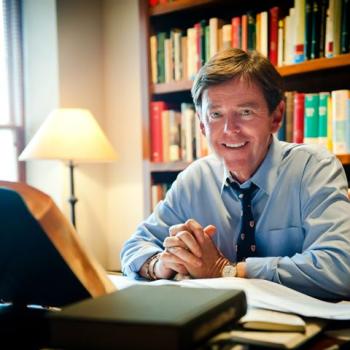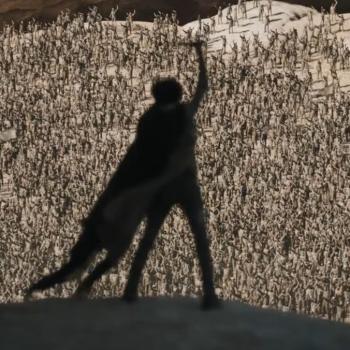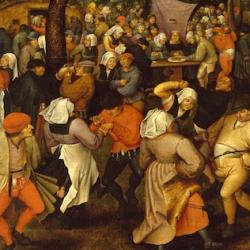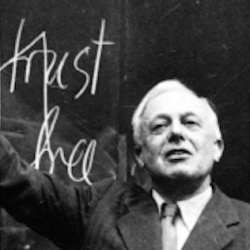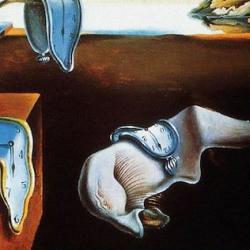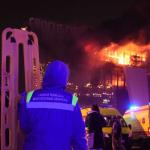In a fascinating article on “the structure of significant lives,” Norman Fiering summarizes Eugen Rosenstock-Huessy’s description of the development of Freud and the psychoanalytic movement. Each involves a different sort of time, and a different “grammar”—a different verbal mood and a different declension for Freud and his followers.
Like other significant intellectual and cultural innovations, Freud began with an inspiration, which arose from a mentor’s chance comment about the relation of neurosis to “genitals.” The comment came to Freud as an imperative, and left him a “preject.”
Summarising Rosenstock’s point, Fiering writes that a “‘preject’ is not a ‘subject,’ he is not an ego or an ‘I,’ nor is he an ‘object,’ a ‘him’ or an ‘it.’ At the beginning of his great accomplishment, the founder of Psychoanalysis rather than willing something into existence is initially passive, a patient not an agent, a receptor, intrigued by what he has heard and captivated by it. The ego does not come first; the imperative, the call to action, precedes it.”
At this stage, Freud and other innovators experience an absolute certainty, a sense of being guided by something beyond them; the certainty arises from a sense that some power is carrying them along. As Fiering says, “We are precipitated from above. Man being the animal that changes his environment, the phase of inspiration is that phase in which sufficient strength accrues to the individual so that he feels empowered to change the environment for the group. Inspiration does no more than that. It dislocates and places us. We cease to be part of the environment, we are made the center of a new environment which, in our inspiration, is envisaged and anticipated by us.”
If the creative insight is going to persist, it has to be followed by a more suspenseful, anxious and angsty time. Freud “strives to make his case, with no certain outcome.” Instead of a “preject” thrown ahead into a new environment by a compelling imperative, he becomes “a subject with a will, an ego that is driven to communicate. In this subjective time of suspense, the subject asks himself: Will I be able to communicate what I have discovered? Do I have the strength to carry out the commission that has overwhelmed me?” The creative imperative yields to a “subjunctive” mood of contingency and conditionality. This is often a period of opposition, of intellectual martyrdom, when the innovator becomes an outcast from the old world that no longer can contain him.
Rosenstock-Huessy claimed that this was followed by a third stage, a third experience of time and grammar, which he describes as “immortalization” or “eternalization.” This is the stage at which the creative insight of the founder becomes a movement. The lone reformer or innovator, the ego subject, becomes a plural “we.” The creative insight of the founder can be perpetuated because the crusader has become a tribe. At this point, the founder becomes a “traject,” not propelled into the future, but looking back to the past. Fiering notes, “In the third stage, the literary form is personal narrative, the autobiographical recounting of what ‘we’ have done.”
Finally, the movement turns into an object of analysis. It and its founder can be viewed from a distance, as objects. In this last stage, “Psychoanalysis is perceived in detachment, as a development in the past that occupied a particular ‘space of time’ with an objective chronology. Time at this juncture lacks the urgent ‘now or never’ of the moment of inspiration, lacks the anxiety of hope and expectation that may go on for years and years, and it is not the entrance into the eternity of recurrent new life by the formation of an intellectual movement.” Rather, historians can tell the “objective history of Psychoanalysis, Freud and his creation as existing in space, a space of time, as ‘object’—in grammar ‘it’ or ‘they’ or ‘he.’”
Rosenstock often criticized the way scientific models of objectivity had invaded the social sciences, with the result that the final, objective, distanced mode of analysis is taken as the only truly scientific one. On the contrary, by the time a system of ideas or a movement can be analyzed, the creative energies have settled into regular patterns.
Rosenstock does not despise analysis, but wishes that analysts would understand their place: “If only the objectivists, critics, and analysts were willing to admit they are supplementary latecomers! They could then become useful members of the human race again. As retrospective contributors they are always welcome. But they have wanted to pretend to us that their experience of time as retrospective is the first and only true and scientific one.”
(Fiering, “The Structure of Significant Lives,” The European Legacy [2017]: 1-21.)



